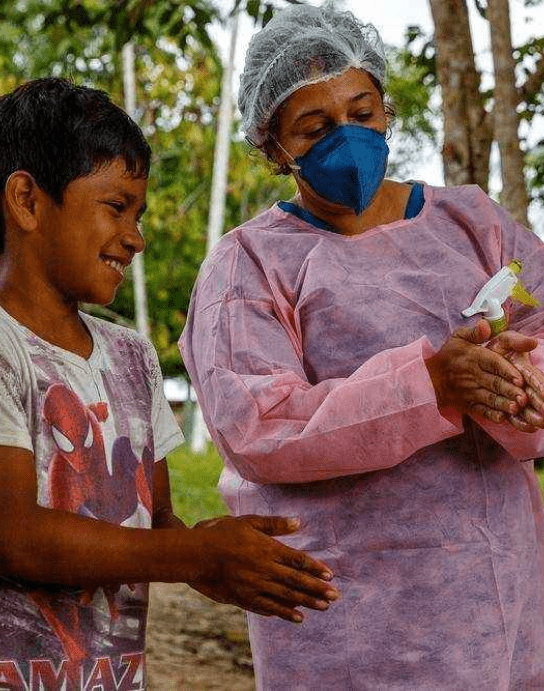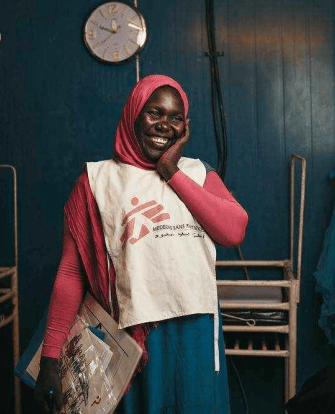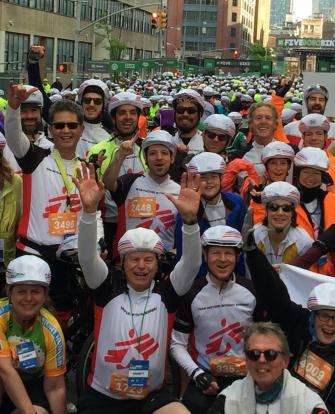Emergency response during outbreaks
Most MSF vaccination activities revolve around emergency responses to outbreaks of vaccine-preventable diseases in settings where children and adults haven’t been covered by routine immunization programs.
In Syria, for example, ongoing war has disrupted vaccinations and other medical services in many parts of the country. Following a 2015 measles outbreak in northern Syria, a coverage survey undertaken by MSF in the Kobane region showed that only 17 percent of children in families displaced by fighting were fully vaccinated. MSF then supported a nine-day measles vaccination campaign, providing vaccination and vitamin A for children between six months and five years of age. In 2016 we continued supporting both measles campaigns and routine childhood vaccination. For example, in the camps and villages around Atmeh, MSF administered over 118,000 vaccine doses to children under the age of five. Globally, MSF administered 1.4 million measles vaccines in response to outbreaks in 2018 alone.
A key aspect of vaccination is logistics—delivering large quantities of vaccine that often require refrigeration across great distances in hard-to-reach areas of low-resource settings without electricity. In 2016 in the Central African Republic, MSF launched a mass multi-antigen vaccination campaign. MSF logistics teams used motorbikes and trucks to transport multiple essential childhood vaccines in coolers to regions all over the country, many without drivable roads. Each morning during the campaign, 370 logistics and medical staff members grouped into 17 teams that traveled for hours, fully equipped with all necessary supplies to bring children in the most inaccessible areas up-to-date with their vaccines. In total, more than one million vaccine doses were administered to children under five years old, with vaccination coverage following the first round above 80 percent.
Introducing new vaccines to impoverished populations
One of the most challenging aspects of MSF’s vaccine initiatives is to bring newer vaccines into the difficult settings where we work. A key hurdle is that these vaccines often significantly increase the cost of the basic vaccination package all children should receive.
A prime example is the vaccine that protects against pneumonia, the leading global cause of childhood death in many developing countries--especially in crowded refugee situations where infections spread quickly. This very expensive vaccine is difficult for many countries, and for MSF, to access at an affordable price. In response, MSF launched the campaign “A Fair Shot,” which helped bring about a drop in the price from as much as $75 to $3.05 per dose for MSF vaccination campaigns during humanitarian emergencies. Since then, a new Humanitarian Mechanism—which we launched together with the World Health Organization, UNICEF, and Save the Children—allows all humanitarian actors (but not governments) to access the pneumonia vaccine at the lowest global price during emergencies. Still, prices for routine immunization put the life-saving pneumonia vaccine out of reach in many settings.
Outbreak prevention for all ages
Some lifesaving vaccines are essential for both children and adults during epidemics, as in the case of cholera and yellow fever. When appropriate, our vaccination activities target people of all ages during emergency outbreak response.
Boosting basic preventive vaccines in pediatrics and emergency programs
MSF is increasingly adopting a more comprehensive approach to get children started, or caught up, on routine vaccination packages. For example, in Borno State, Nigeria, children suffering from acute malnutrition get childhood vaccinations as a part of their care. In Mali, mobile health teams target underserved children with a strategy combining seasonal malaria chemoprevention, rapid nutritional assessment, and vaccination.
Bringing new tools and approaches to the field
A crucial part of MSF’s response is supporting development of simpler ways to deliver vaccines to children and adults and of better-adapted vaccines. For example, while cholera vaccine is usually given as two doses at least two weeks apart, we found that a single dose provides effective short-term protection—which means that very limited vaccine supplies can be stretched further to protect more people during an outbreak.
In another example, in 2014-2015 we tested a new vaccine against rotavirus, a major childhood killer in many low-resource settings. While the standard vaccine is expensive and needs to be kept cold, the new one is cheaper, taken orally rather than injected, and does not need refrigeration. Our trial in Niger showed that the new vaccine was effective in reducing serious illness and death from diarrheal disease. This should make it much easier to reach communities in remote areas with limited access to health services.
Advocacy for increased access to vaccination
Research and development of vaccines adapted for use in developing countries is crucial to increasing coverage. Three of the most important needs are: vaccines with improved heat stability (so they remain stable outside the cold chain for limited time periods), vaccines that eliminate or reduce the need for trained health workers to do injections (for example, through simpler, more flexible routine vaccination schedules), and single-dose vaccinations that don’t require multiple clinic visits or rounds of vaccination campaigns.
Also, expanding the age range during which children can receive free vaccines through national immunization programs will allow those who missed their scheduled childhood vaccines to “catch up” and gain protection against potentially fatal diseases.
Finally, vaccines need to be affordable for all countries, yet the cost of basic vaccination packages is rising very fast—due especially to the more expensive newer vaccines.








